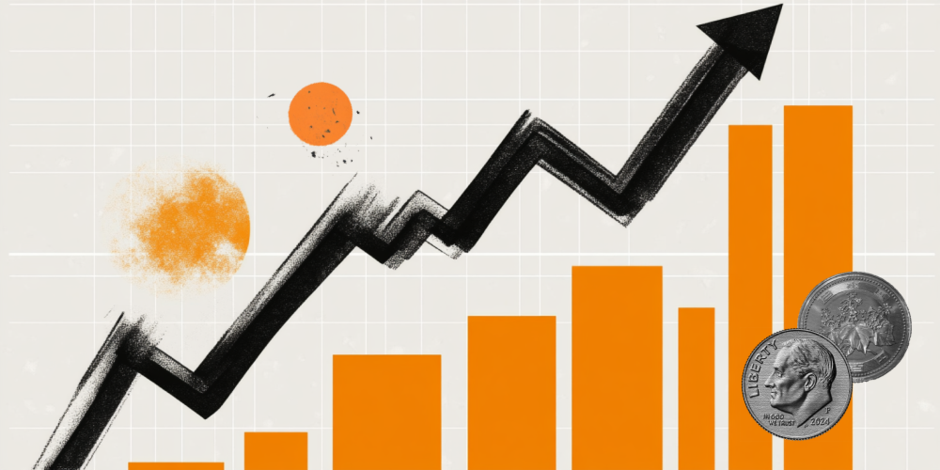USD/JPY recovers some intraday losses amid uncertainty of Trump’s return to White House
- USD/JPY recoups some intraday losses as the US Dollar gains ground with focus on Donald Trump’s inauguration.
- Traders have raised Fed dovish bets after soft US core CPI data for December.
- BoJ Ueda keeps the option of further rate hikes in January’s policy meeting on the table.

The USD/JPY pair bounces back from the intraday low of 155.20 and rises to near 156.00 but is still down around 0.25% in Thursday’s North American session. The asset recovers as the US Dollar (USD) gains ground after Wednesday’s sell-off that was driven by surprisingly lower core Consumer Price Index (CPI) reading for December.
The US Dollar Index (DXY), which tracks the Greenback’s value against six major currencies, rises to near 109.25.
The CPI report showed on Wednesday that the core inflation – which excludes volatile food and energy prices – grew at a slower pace of 3.2% from the estimates and the prior release of 3.3%. Soft core reading led to an uptick in Federal Reserve (Fed) dovish bets. As a result, traders are now pricing in two interest rate cuts from the Fed this year, with the first coming in September, according to the CME FedWatch tool.
Meanwhile, the next major trigger for the US Dollar is the President-elect Donald Trump’s inauguration ceremony on Monday. Market participants expect Trump will release updated tariff plan sooner that would lead to a global trade war. The impact will be favorable for growth and inflationary pressures in the United States (US).
In the Asia Pacific front, growing expectations of more interest rate hikes from the Bank of Japan (BoJ) keeps the Japanese Yen (JPY) on the frontfoot. Traders price in two interest rate hikes this year, Reuters reported. Market speculation for the BoJ to raise interest rates were stemmed from Governor Kazuo Ueda’s commentary on Wednesday in which he said that the central bank is currently “analysing data thoroughly” and will compile the findings in the quarterly outlook report, and on based on that the bank will discuss whether to “raise interest rates at next week's policy meeting”.
US Dollar FAQs
The US Dollar (USD) is the official currency of the United States of America, and the ‘de facto’ currency of a significant number of other countries where it is found in circulation alongside local notes. It is the most heavily traded currency in the world, accounting for over 88% of all global foreign exchange turnover, or an average of $6.6 trillion in transactions per day, according to data from 2022. Following the second world war, the USD took over from the British Pound as the world’s reserve currency. For most of its history, the US Dollar was backed by Gold, until the Bretton Woods Agreement in 1971 when the Gold Standard went away.
The most important single factor impacting on the value of the US Dollar is monetary policy, which is shaped by the Federal Reserve (Fed). The Fed has two mandates: to achieve price stability (control inflation) and foster full employment. Its primary tool to achieve these two goals is by adjusting interest rates. When prices are rising too quickly and inflation is above the Fed’s 2% target, the Fed will raise rates, which helps the USD value. When inflation falls below 2% or the Unemployment Rate is too high, the Fed may lower interest rates, which weighs on the Greenback.
In extreme situations, the Federal Reserve can also print more Dollars and enact quantitative easing (QE). QE is the process by which the Fed substantially increases the flow of credit in a stuck financial system. It is a non-standard policy measure used when credit has dried up because banks will not lend to each other (out of the fear of counterparty default). It is a last resort when simply lowering interest rates is unlikely to achieve the necessary result. It was the Fed’s weapon of choice to combat the credit crunch that occurred during the Great Financial Crisis in 2008. It involves the Fed printing more Dollars and using them to buy US government bonds predominantly from financial institutions. QE usually leads to a weaker US Dollar.
Quantitative tightening (QT) is the reverse process whereby the Federal Reserve stops buying bonds from financial institutions and does not reinvest the principal from the bonds it holds maturing in new purchases. It is usually positive for the US Dollar.
Author

Sagar Dua
FXStreet
Sagar Dua is associated with the financial markets from his college days. Along with pursuing post-graduation in Commerce in 2014, he started his markets training with chart analysis.

















